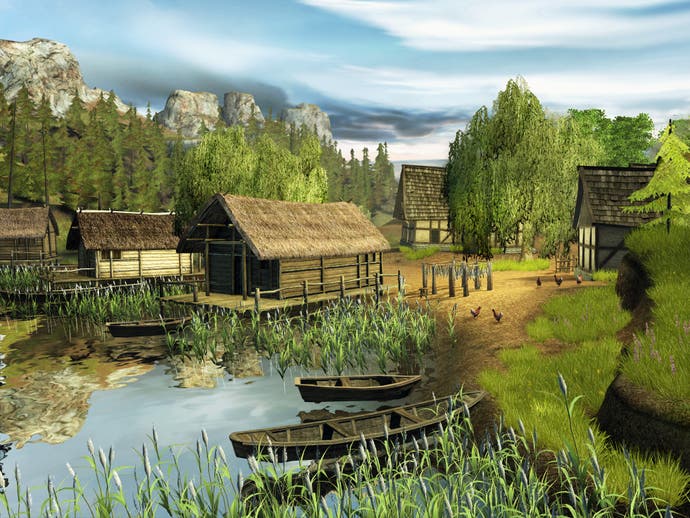Drakensang: The Dark Eye
Vorsprung durch experience points.
Xindan of Spogelsen. Hilgert the Whimsical. Firu of Gareth. Wolfman Beerworth.
We could go on. These choice gems are some of the better options thrown up by Drakensang's random name generator, and they save an awful lot of time in explaining just what sort of game it is.
The Dark Eye is a German pen-and-paper tabletop RPG, originally conceived by Ulrich Kiesow in 1984. In the 15 years since it's undergone countless tweaks, polishes and buffs, rendering it Germany's most popular dice-roller and cowing even the mighty Dungeons & Dragons rules in the sales figures. It all happens on the conveniently named continent of Aventuria, a land divided between the kingdoms of Men, Dwarves, Elves, Orks, Goblins, Ogres, Trolls, etcetera, etcetera. Oh, and Dragons are quite big players, too. What this translates to is a fairly by-the-numbers interpretation of the classic high-fantasy scenario.
The first few lines of my notes aren't particularly promising: "Dragons. War. Dwarves, Elves, etc. Dwarves = angry, Elves = nancies. First nipple (male) approximately 28 seconds in."
The complexities are a little more subtle than that, but you see where I'm going. A dragon-like race is returning to Aventuria, bringing the usual cadre of miscreants along with it, and at some point it'll be up to you to stop it. When you've played as many fantasy RPGs as we have, it's not the most inspiring story. Happily, Drakensang does distinguish itself in other ways.

Straight off the bat, or menu, is the excellent character creation screen. A generous spread of classes are unfurled from the fantasy picnic basket, some familiar, some not. They're arranged into 'style' groups, with three separate flavours of each available, apart from the one-off Pirate and Amazon classes. All of the classes are race-specific, with most roles being filled by members of the various human kingdoms, and Elves and Dwarves getting three each.
There are staples like Warrior and Rogue, but there are also more esoteric fantasy figures like the Metamage and Burglar. These can be picked ready-built, or fine-tuned to fit your particular needs. Indeed, the wealth of perks, skills, attributes and combat actions available pay great tribute to Drakensang's origins in the Dark Eye ruleset, despite its much-reduced digital incarnation. Sadly, there was no physical tweaking to be done, meaning you're stuck with the somewhat anodyne character models which the game picks for you.
Once you've put your virtual face on, it's straight into the action at Avetrue: the first, feet-finding section of Aventuria. Except there's not a lot of action, because like almost every RPG ever, the first area is a sleepy rural hamlet full of folks with endearing problems like missing hunters and lost jewellery. Presentation is pretty enough, although graphics are a little flat and soft, with glowing fields of bloom-encrusted flowers and gently pastel-shaded tents. The inhabitants are standard fare too: concerned, terse, yet ultimately public-spirited guardsmen; nagging traders' wives; hayseed yokels and the obligatory impractically-endowed glamour pusses.








